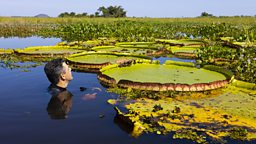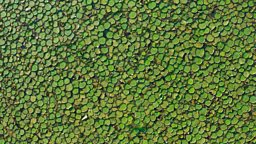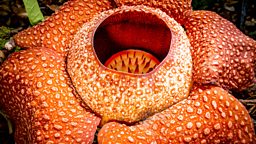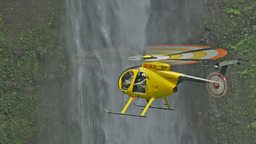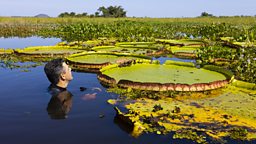Filming giant water lilies
By Roberta Bonaldo, Brazillian camera assistant
The search for the giant water lilies in the Brazilian Pantanal brought many challenges
The search for the giant water lilies in the Brazilian Pantanal brought many challenges to the Brazilian team of cameramen João Paulo Krajewski and assistants Roberta Bonaldo and Edson Faria Júnior. In 2019 they organised an expedition for filming this iconic plant, but it had to be cancelled because of the atypical drought that hit the Pantanal that year. In 2020, we planned another attempt, but this time the covid-19 pandemic forced the team to cancel their plans. Finally, in 2021, with tight covid-19 protocols in place, the team loaded their kit into a small plane and headed to the Pantanal.
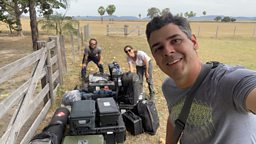
In the Pantanal, the search was concentrated in Amolar, a region where there are lagoons with the giant water lily. However the Pantanal has been suffering with fires and drought in recent years and the landscape has been changing dramatically in some areas, making it hard even for locals know exactly where to find the plants, especially in big numbers.
the landscape has been changing dramatically
With the assistance of local guides of the ���˿���m Pantaneiro institute, the team encountered some areas with some giant water lilies. The mountains in the Amolar region create a unique landscape in the whole Pantanal, where most areas are low and flat. However, the numbers of Lilies here were not big as we needed.

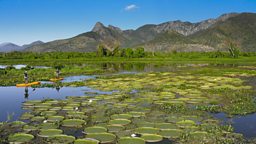
The air gets thick with mosquitoes!
The flowers open after sunset, when the beetle that pollinates them is active. However, in addition to the beetles, huge swarms of mosquitoes also get active as the night falls. The air gets thick with mosquitoes! Therefore, filming when the night falls in Pantanal combines the challenges of low light and mosquito bites. Protected with thick clothes, mosquito nets over their heads (and over their cameras) and insect repellents, the team was able to film the different stages of such a natural spectacle
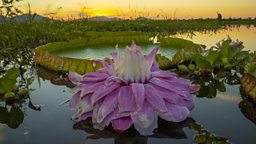

The plant is densely covered with sharp spines
The next challenge was to take underwater images of the lilies. The plant is densely covered with sharp spines on its submerged parts, so swimming around them was quite hard, and wearing dive suits and fins was very important so that João could accomplish this mission safe and without scratches.
